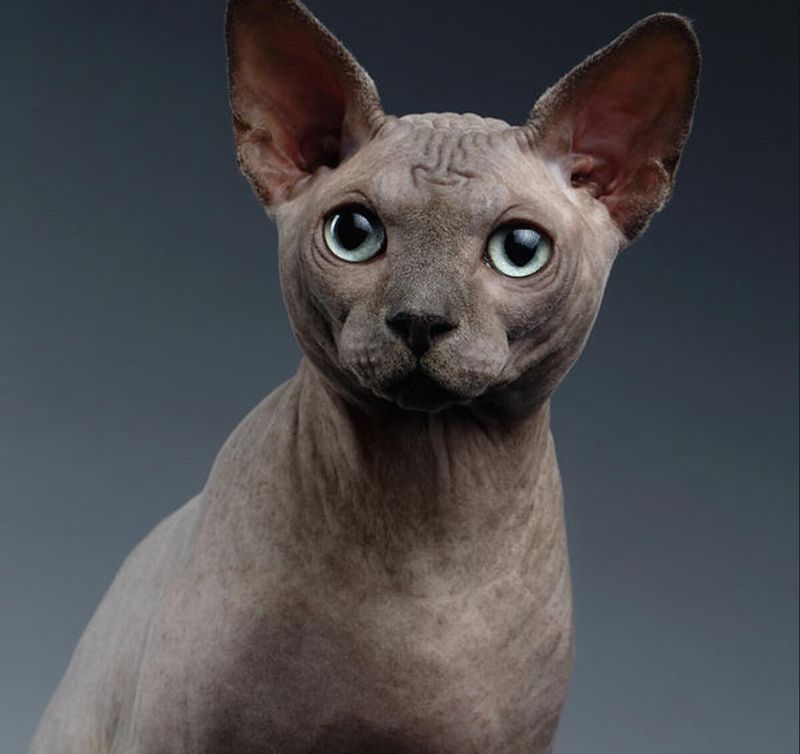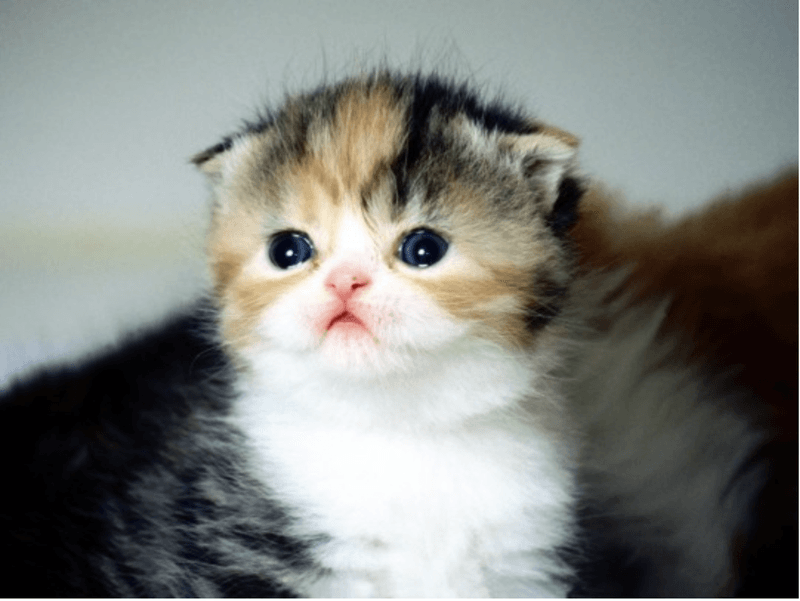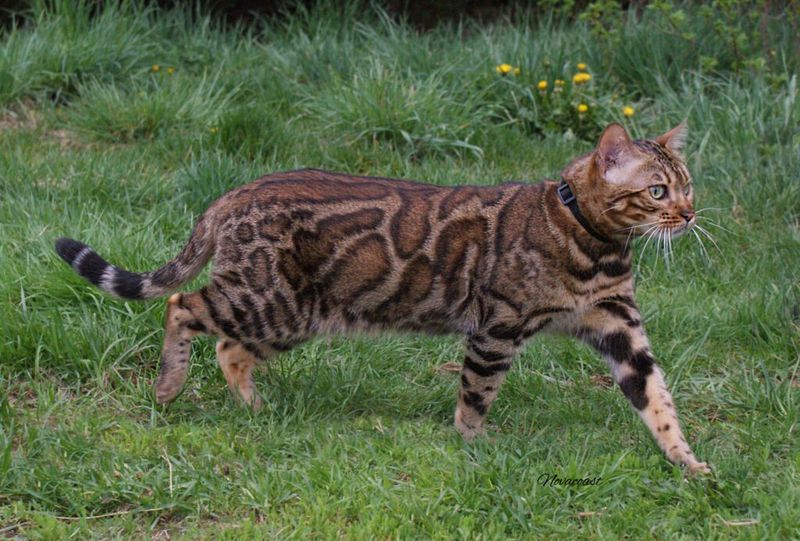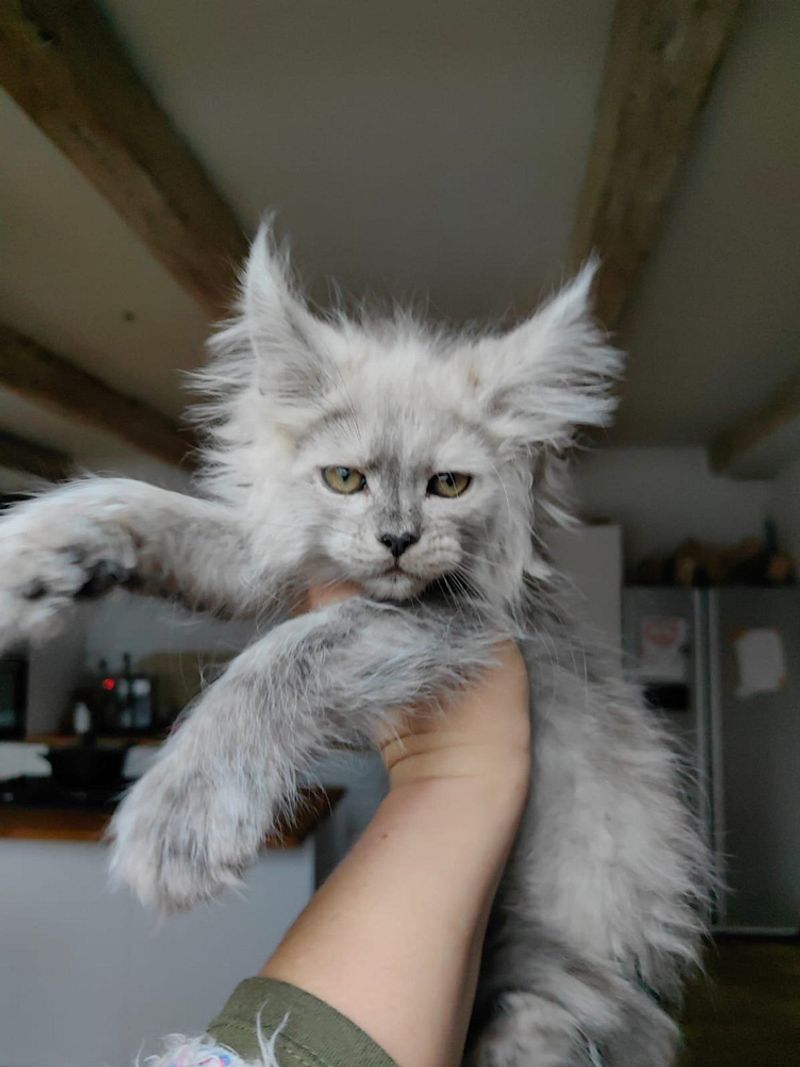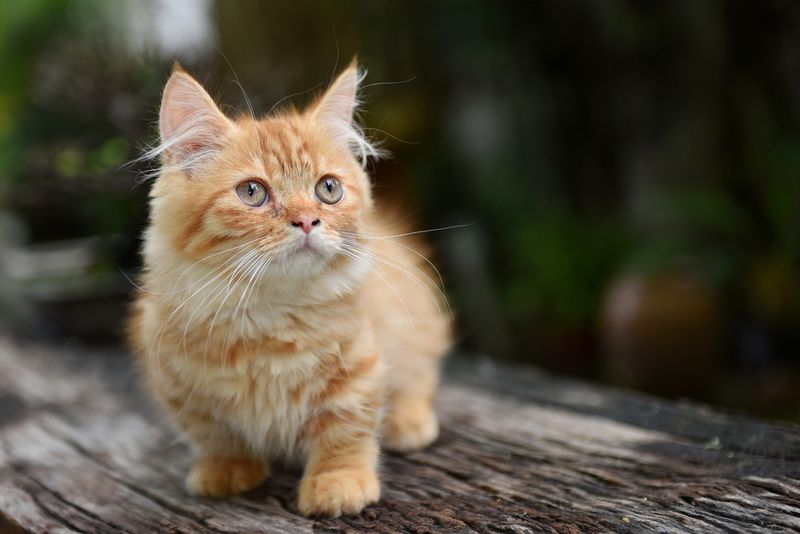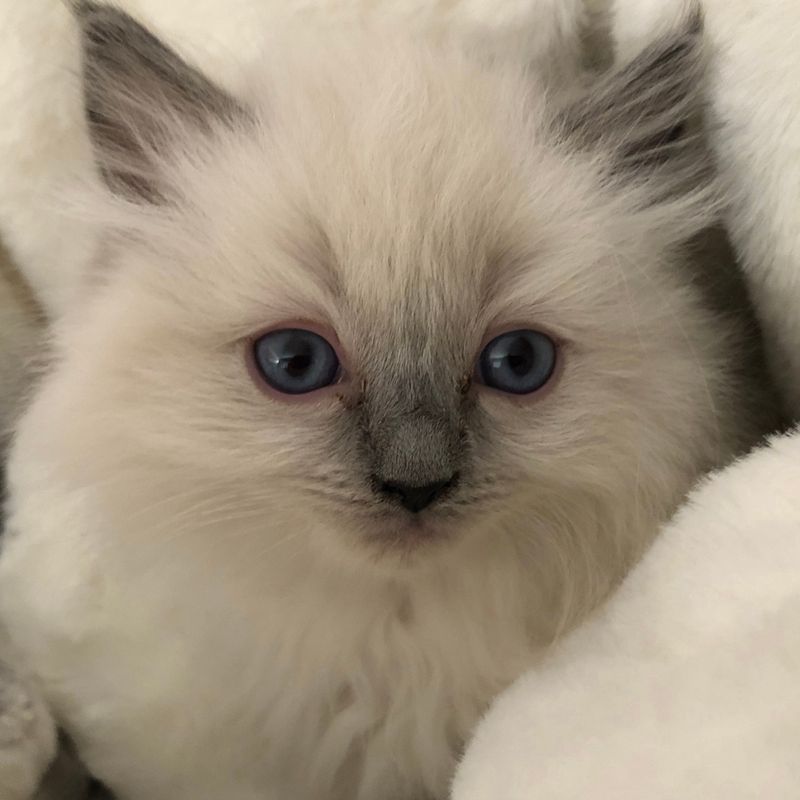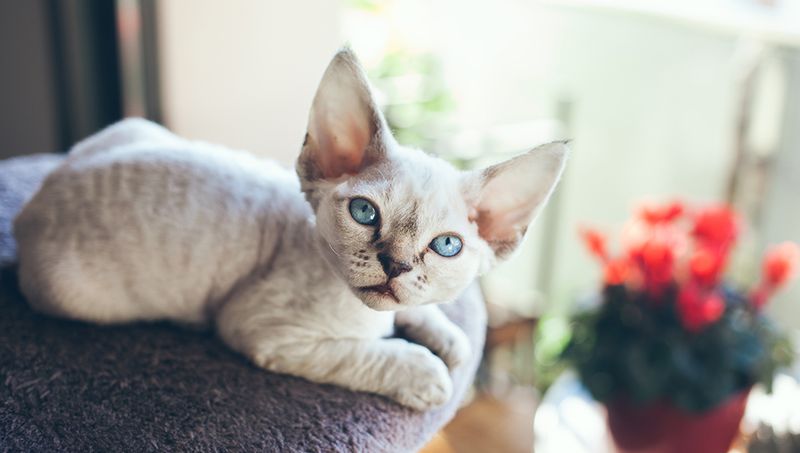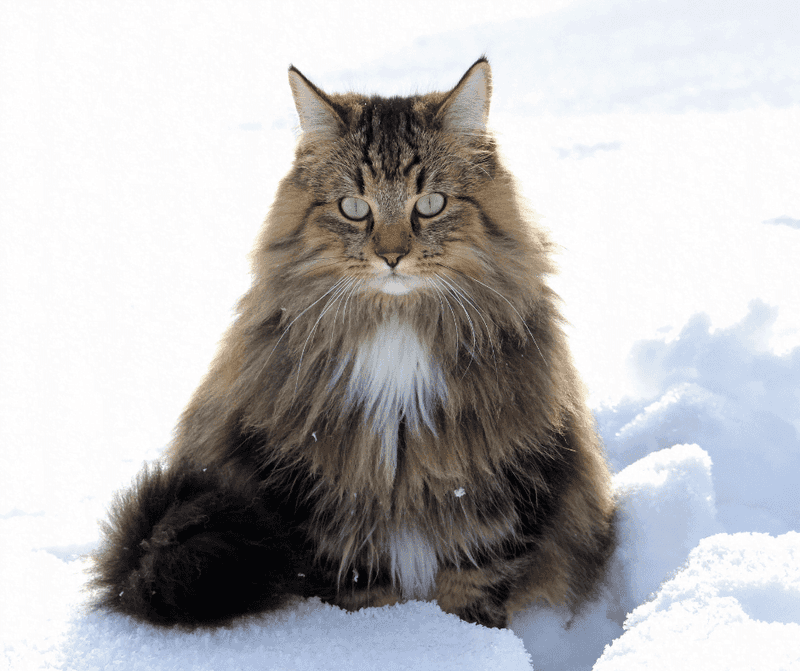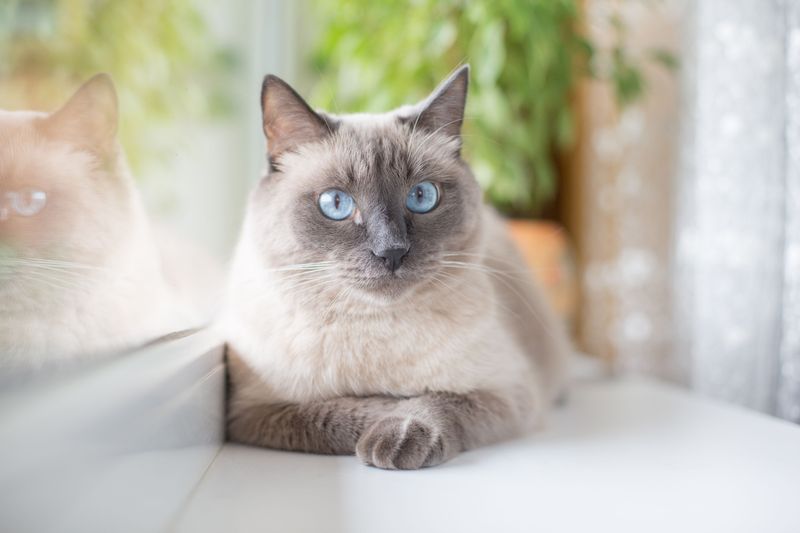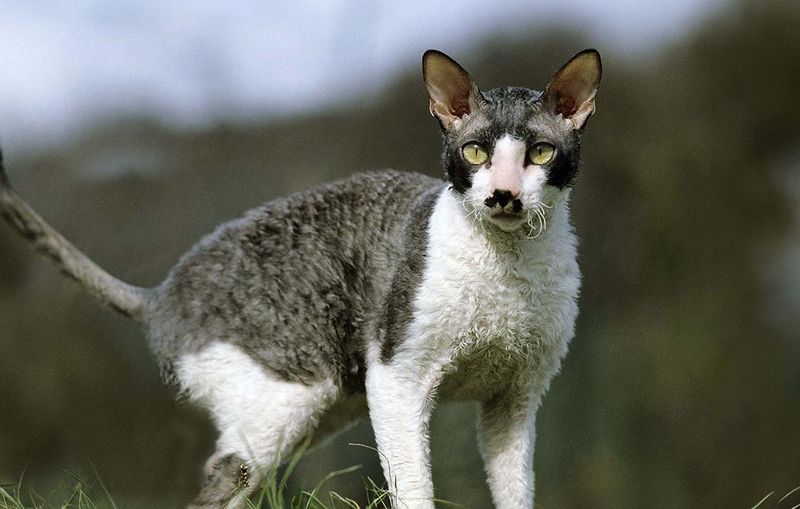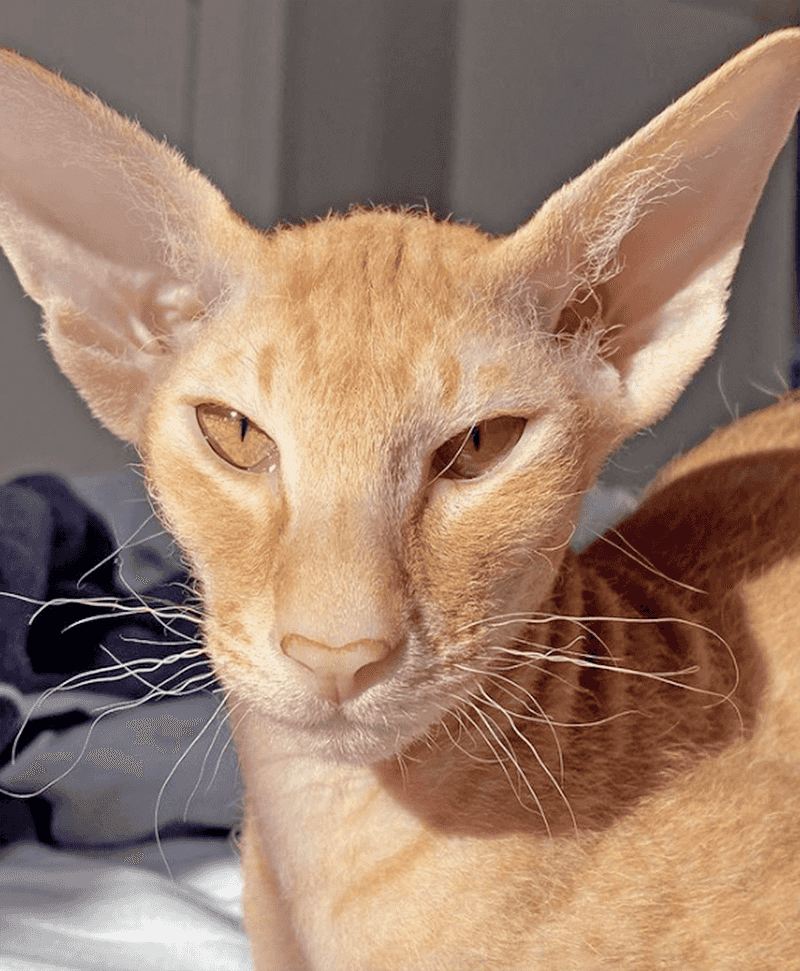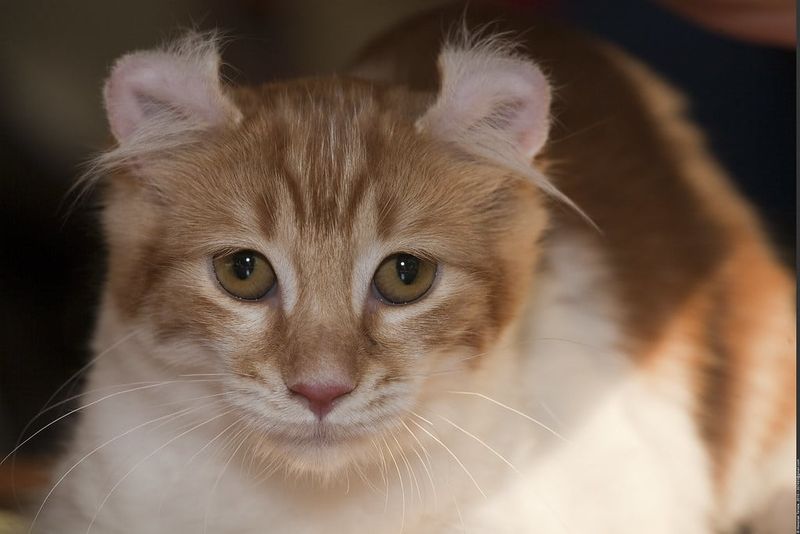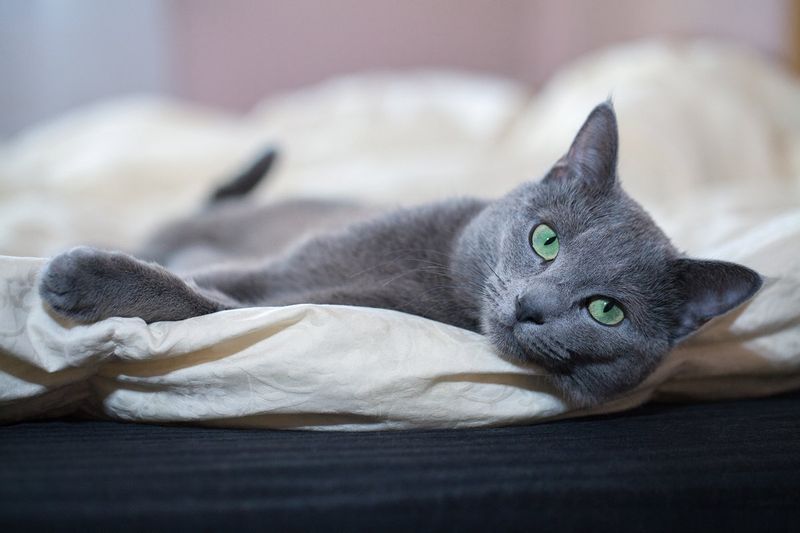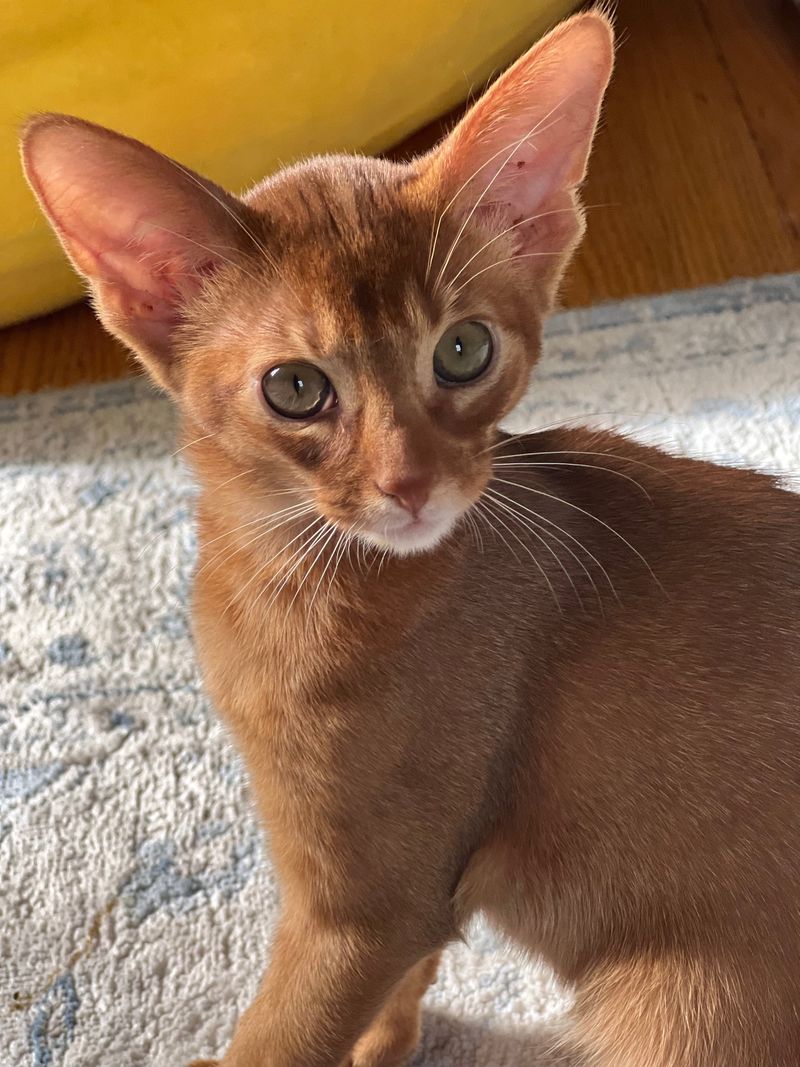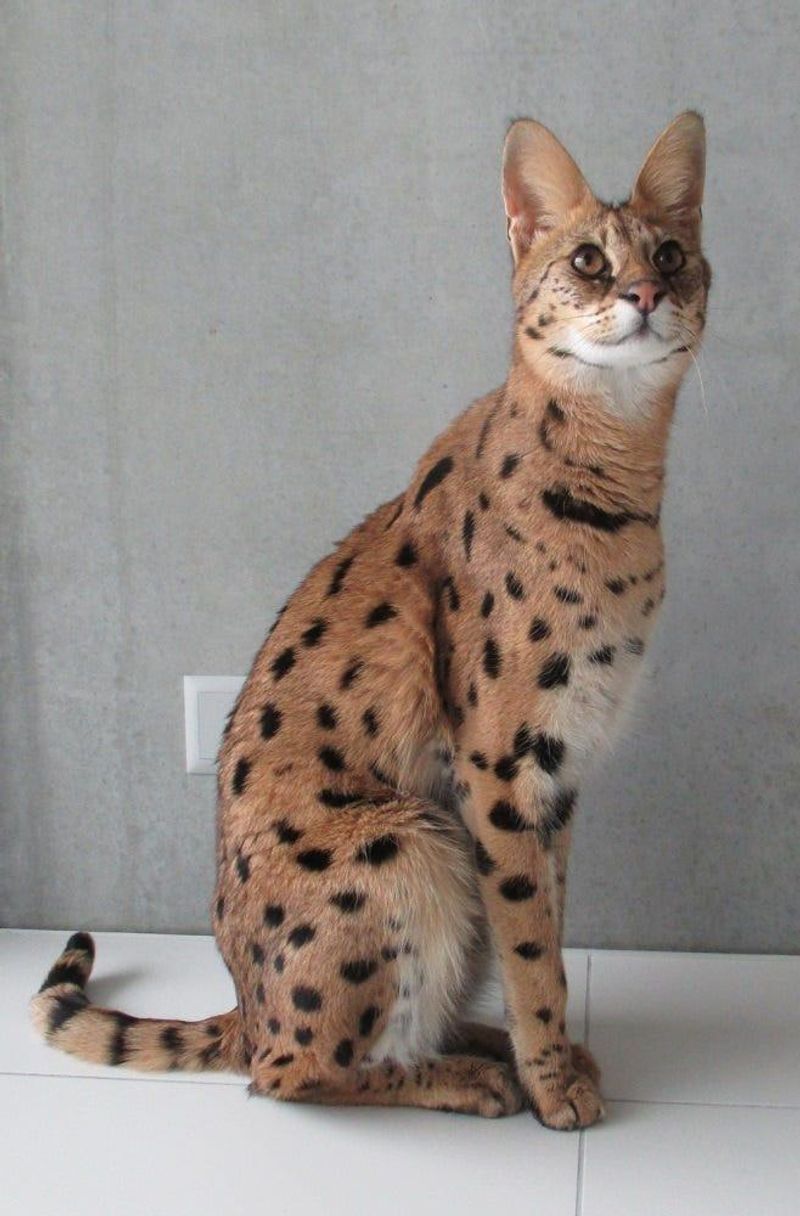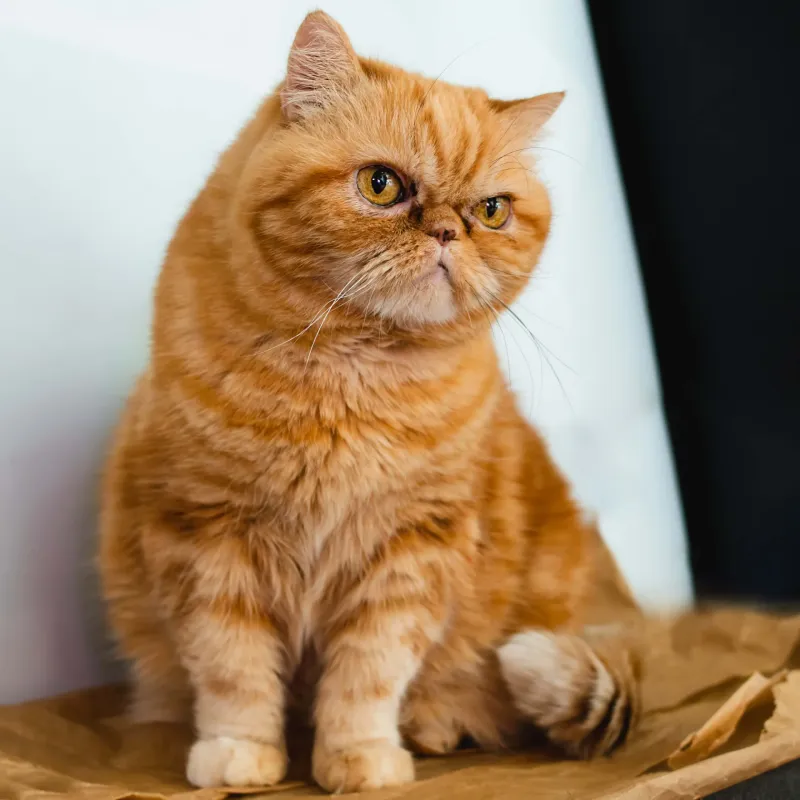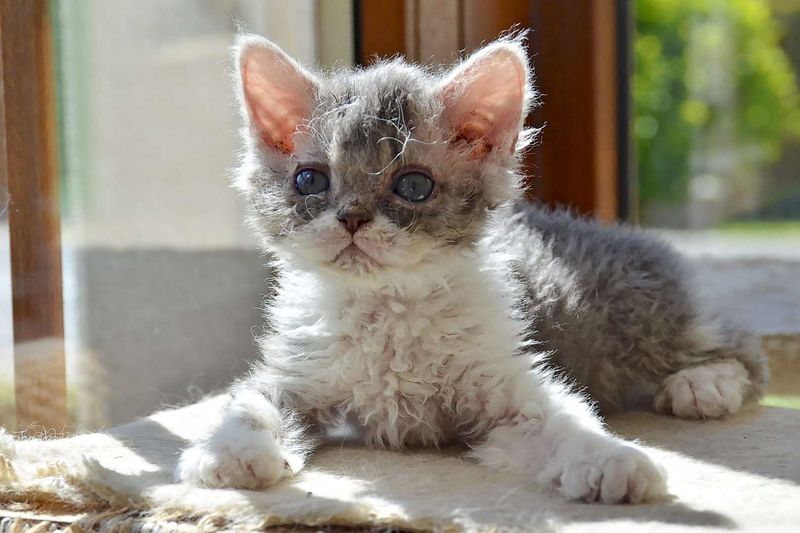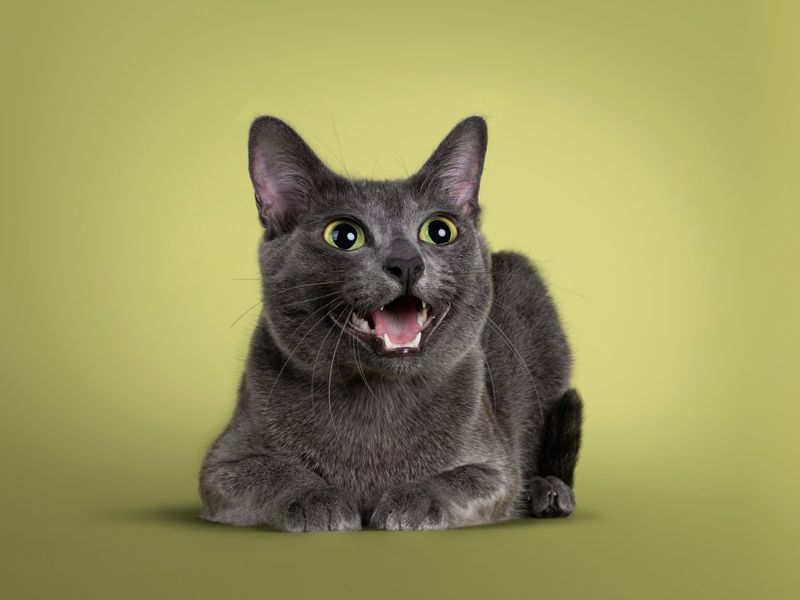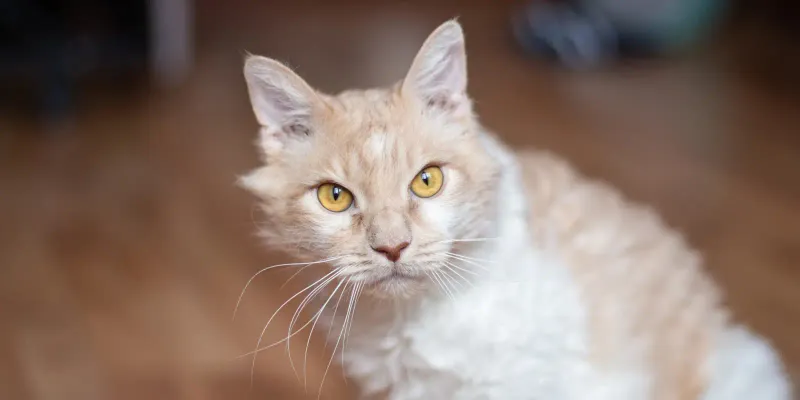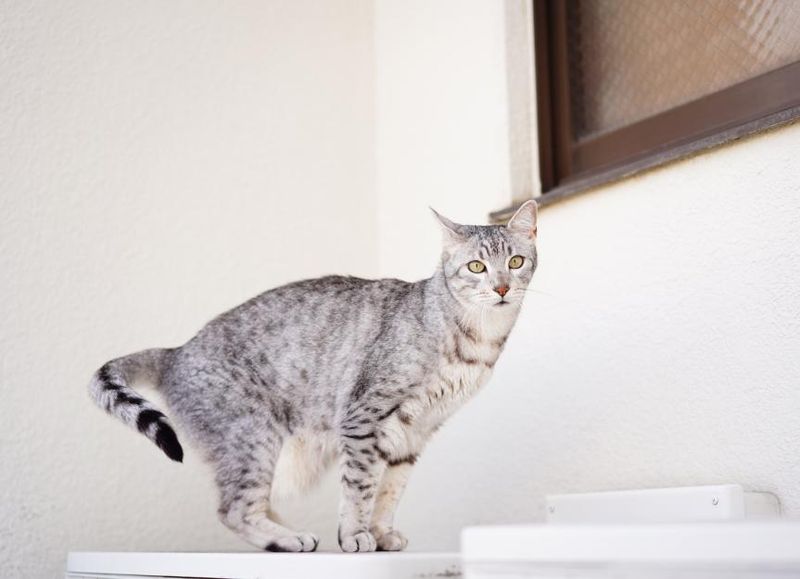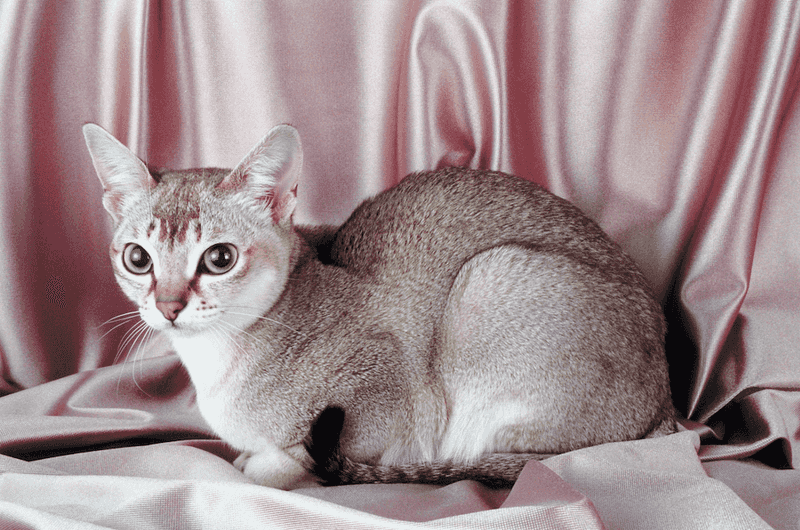📖 Table of Content:
- 1. Sphynx
- 2. Scottish Fold
- 3. Bengal
- 4. Maine Coon
- 5. Munchkin
- 6. Ragdoll
- 7. Devon Rex
- 8. Norwegian Forest Cat
- 9. Siamese
- 10. Cornish Rex
- 11. Peterbald
- 12. American Curl
- 13. Russian Blue
- 14. Abyssinian
- 15. Savannah
- 16. Exotic Shorthair
- 17. Selkirk Rex
- 18. Turkish Van
- 19. Korat
- 20. LaPerm
- 21. Egyptian Mau
- 22. Singapura
Cats captivate with their unique personalities and striking appearances. Uncommon coat patterns and rare genetic traits make certain felines truly one of a kind. These exceptional cats challenge traditional expectations, revealing the incredible diversity within the feline world.
Some cats showcase features rarely seen in typical pets, sparking curiosity and admiration. Their distinctiveness highlights the wide range of beauty and character found among cat breeds. Exploring these remarkable traits offers a deeper appreciation for the complexity of feline companions.
Beyond ordinary appearances, these cats bring surprises through their behavior and genetics. Their rarity adds an element of fascination for enthusiasts and casual admirers alike. Celebrating such uniqueness reminds us how varied and enchanting the world of cats truly is.
1. Sphynx
Hairless and proud, Sphynx cats turn heads wherever they go. Their wrinkled skin feels like warm suede beneath your fingers, creating a tactile experience unlike any other cat breed. Despite lacking a fur coat, these cats run warmer than most breeds and seek out cozy spots to maintain their body temperature. Many Sphynx owners dress their pets in tiny sweaters during colder months. Their outgoing personalities match their distinctive appearance. Sphynx cats form strong bonds with their humans and often follow them from room to room like loyal shadows.
2. Scottish Fold
Famous for their folded ears that give them an owl-like appearance, Scottish Folds melt hearts instantly. The unique ear shape comes from a natural dominant gene mutation that affects cartilage throughout their bodies. These sweet-natured cats adapt well to various living situations and get along famously with children and other pets. They’re moderately active but not hyperactive, preferring to observe household activities from a comfortable perch. Scottish Folds communicate with soft chirps rather than loud meows, adding to their gentle charm. Their round faces and folded ears create an eternally kitten-like expression.
3. Bengal
Wild-looking but domestically sweet, Bengal cats showcase spectacular spotted or marbled coats that shimmer with a unique glitter effect. Their ancestry traces back to Asian leopard cats, giving them their exotic appearance while maintaining friendly dispositions. Athletic and energetic, Bengals require interactive play and climbing opportunities to stay happy. They often develop a fascination with water, pawing at faucets or even joining their owners in the shower. Intelligence shines through in these cats, who quickly learn tricks and can even be taught to walk on leashes. Their striking appearance combined with playful personalities makes them unforgettable companions.
4. Maine Coon
Gentle giants of the cat world, Maine Coons captivate with their massive size and tufted ears. Adult males can weigh up to 18 pounds or more, making them one of the largest domestic cat breeds in existence. Their water-resistant shaggy coats and bushy tails evolved to help them survive harsh New England winters. Lynx-like ear tufts and large, snowshoe-like paws complete their wild yet endearing appearance. Maine Coons chirp and trill rather than meow, communicating with a distinctive vocabulary of sounds. Despite their imposing size, these cats are known as “gentle giants” for their sweet, non-aggressive temperaments.
5. Munchkin
Short-legged but full of personality, Munchkin cats scamper around on legs that seem too tiny for their bodies. Their unique proportions result from a natural genetic mutation affecting cartilage development. Don’t let their short stature fool you – these cats can move quickly and even corner with impressive agility. Their bodies remain proportional except for those distinctive shortened limbs. Munchkins retain kitten-like playfulness throughout their lives, always ready for games and exploration. They’re social butterflies who thrive on human interaction and don’t seem aware that they’re any different from other cats.
6. Ragdoll
Floppy and relaxed when held, Ragdolls earned their name from their tendency to go limp like a child’s toy. These gentle giants melt into your arms when picked up, showcasing their trademark docile temperament. Their striking blue eyes contrast beautifully with color point coats that darken at the extremities. Full-grown Ragdolls can weigh between 10-20 pounds, making them one of the larger domestic breeds. Patient and mild-mannered, these cats rarely extend their claws during play. Their calm nature makes them ideal for families with children or other pets, as they’re unlikely to scratch when handled.
7. Devon Rex
Sporting a wavy, soft coat that feels like suede, Devon Rex cats look like they just stuck their paw in an electrical socket. Their large ears, slender bodies, and mischievous expressions give them an elf-like appearance that cat lovers find irresistible. Born entertainers, these cats perform acrobatic jumps and tricks well into adulthood. They form intense bonds with their humans and will follow them everywhere, even learning to retrieve toys like dogs. Devon Rex cats produce less of the Fel d1 protein than other breeds, making them potentially more suitable for some allergy sufferers. Their low-maintenance coats require minimal grooming.
8. Norwegian Forest Cat
Built for Scandinavian winters, Norwegian Forest Cats boast thick, water-resistant double coats and sturdy bodies. Their almond-shaped eyes and triangular heads give them a wild, lynx-like appearance that commands attention. Skilled climbers with strong claws, these cats can scale vertical surfaces with impressive ease. Their bushy tails, nearly as long as their bodies, help them balance during climbing adventures and provide warmth when wrapped around them during cold weather. Despite their rugged appearance, Norwegian Forest Cats display gentle, patient personalities. They mature slowly, taking up to five years to reach full size and development.
9. Siamese
Vocal and opinionated, Siamese cats won’t hesitate to tell you exactly what’s on their minds. Their distinctive color-pointed coats result from a heat-sensitive enzyme that creates darker fur on cooler body extremities. Striking blue almond-shaped eyes peer out from wedge-shaped faces, creating an exotic appearance that’s instantly recognizable. The modern Siamese has evolved to have a more elongated, slender body than its traditional ancestors. Highly intelligent and social, these cats form deep bonds with their humans and can become depressed if left alone too often. Their loud, raspy voices sound almost human-like as they carry on conversations with their owners.
10. Cornish Rex
Curly-coated and elegant, Cornish Rex cats feel like warm velvet when petted. Their distinctive coat consists only of the soft undercoat, missing the normal guard and awn hairs that most cats have. Slender bodies with arched backs and whippet-like appearance give these cats a distinctive silhouette. Their large ears and egg-shaped heads contribute to their unusual, almost alien appearance. Cornish Rex cats stay playful throughout their lives, racing around the house in what owners often call the “Cornish Rex gallop.” They’re heat-seekers who will find the warmest spot in the house, often preferring to sleep under blankets or directly on their human’s lap.
11. Peterbald
Ranging from completely hairless to having a fine peach fuzz coat, Peterbald cats showcase a variety of skin textures. Their elegant, oriental body type features long legs, slender bodies, and whip-like tails. Born with hair, many Peterbald kittens gradually lose their coats as they mature. Some retain a fine down that feels like chamois leather, while others become completely hairless. Extremely affectionate and people-oriented, these cats form strong attachments to their families. They use their front paws almost like hands, manipulating objects and even opening doors with their dexterous digits.
12. American Curl
Ears that curl backward toward the center of the skull make American Curls instantly recognizable. All kittens are born with straight ears that gradually begin to curl within 48 hours, reaching their permanent shape around 16 weeks. The unique ear shape results from a spontaneous genetic mutation that appeared in a stray cat in California in 1981. The curl can range from slight to extreme, with show-quality cats displaying an arc between 90-180 degrees. Playful and affectionate, American Curls maintain kitten-like behaviors well into adulthood. They’re known for their adaptability and get along well with children, other pets, and even strangers.
13. Russian Blue
Shimmering silver-blue coats that appear to glisten in the light make Russian Blues truly magical. Their dense double coats stand out from their bodies, creating a plush, soft texture that feels like luxurious velvet. Bright green eyes contrast beautifully with their bluish-gray fur, creating a striking appearance. The slight upward curve of their mouths gives them a perpetual “Mona Lisa smile” that adds to their mysterious charm. Reserved with strangers but deeply devoted to their families, Russian Blues form strong bonds with their chosen humans. Their sensitive nature means they pick up on household moods, often offering quiet companionship during difficult times.
14. Abyssinian
Active and athletic, Abyssinians move with the grace of miniature cougars. Their ticked coats feature bands of color on each hair shaft, creating a distinctive, warm-toned tabby pattern without the typical stripes or spots. Large, alert ears and almond-shaped eyes give these cats an eternally curious expression. Their lithe, muscular bodies are built for jumping and climbing, allowing them to reach impressive heights with ease. Abyssinians rank among the oldest known cat breeds, with ancestors depicted in ancient Egyptian artifacts. They thrive on interaction and play, becoming bored and even destructive if not given adequate mental and physical stimulation.
15. Savannah
Tall, lean, and spotted, Savannah cats command attention with their wild appearance. Created by crossing domestic cats with African servals, these felines retain exotic features like large ears, long legs, and distinctive spotted patterns. Their size varies depending on how many generations removed they are from their serval ancestors. F1 Savannahs (first generation) can weigh up to 25 pounds and stand as tall as medium-sized dogs. Highly intelligent and energetic, Savannahs require stimulating environments and interactive play. They often enjoy water and can be taught to walk on leashes, blurring the line between feline and canine behaviors.
16. Exotic Shorthair
Persian-like features in a low-maintenance package make Exotic Shorthairs irresistible to cat lovers. Their pushed-in faces and round, copper-colored eyes create an adorably grumpy expression that belies their sweet temperaments. Dense, plush coats feel like stuffed animals, earning them the nickname “lazy man’s Persian.” Their stocky bodies and short legs give them a teddy bear-like appearance that appeals to many cat enthusiasts. Quiet and undemanding, Exotic Shorthairs enjoy peaceful environments where they can lounge on soft surfaces. They form strong bonds with their families but don’t require constant attention, making them ideal companions for busy households.
17. Selkirk Rex
Cuddly and curly-coated, Selkirk Rex cats sport plush, woolly fur that forms loose curls all over their bodies. Unlike other Rex breeds, the Selkirk has all three types of normal cat hair – guard, awn, and down – but each hair is curled. Their substantial bodies and round faces give them a teddy bear-like appearance that matches their gentle personalities. The breed originated from a single curly-haired shelter cat named Miss DePesto in 1987. Patient and laid-back, Selkirk Rex cats adapt well to various living situations. Their curls require gentle combing to prevent matting, especially in the longer-haired variety.
18. Turkish Van
Swimming cats might sound contradictory, but Turkish Vans break that stereotype with their love for water. Native to the Lake Van region of Turkey, these cats developed water-resistant coats and powerful muscles that make them natural swimmers. Their distinctive color pattern features a white body with colored markings only on the head and tail, creating what’s known as the “van pattern.” Cashmere-like coats with no undercoat feel silky and remain relatively tangle-free. Late to mature, Turkish Vans don’t reach their full size and development until 3-5 years of age. Their playful, energetic personalities make them entertaining companions who enjoy interactive games.
19. Korat
Silver-blue coats that shimmer with each movement make Korats stand out in any setting. Their heart-shaped faces and large, luminous green eyes create an expression of intelligence and alertness that captures attention. Considered symbols of good fortune in their native Thailand, Korats were traditionally given as gifts to newlyweds or people of high status. Their muscular bodies feel surprisingly heavy when picked up, packing substantial weight into a medium-sized frame. Devoted and gentle, Korats form strong bonds with their families and prefer peaceful environments. They communicate with soft chirps rather than loud meows, adding to their elegant demeanor.
20. LaPerm
Curly-coated and born from a spontaneous mutation, LaPerms sport bouncy ringlets that feel soft and springy to the touch. The breed began in 1982 with a bald kitten born on an Oregon farm who later developed a coat of curly hair. Available in both longhair and shorthair varieties, LaPerms display curls that range from tight ringlets to waves and loose curls. Their coats shed less than straight-haired cats, making them potentially more suitable for some allergy sufferers. Affectionate and people-oriented, LaPerms seek human interaction and enjoy being part of family activities. They maintain a playful, kitten-like demeanor well into adulthood.
21. Egyptian Mau
Naturally spotted coats make Egyptian Maus stand out from other domestic cats. As the only naturally spotted domestic breed, their distinctive markings appear on both the tips of their fur and the skin underneath. Known as the greyhounds of the cat world, Egyptian Maus can run up to 30 miles per hour, faster than any other domestic cat. Their muscular bodies and unique flap of skin extending from flank to back knee allows for greater stride length when running. Sensitive and devoted to their chosen humans, these cats form strong bonds but may be reserved with strangers. Their lineage traces back to ancient Egypt, where cats were revered as sacred animals.
22. Singapura
Tiny but mighty, Singapuras hold the title of world’s smallest cat breed. Adults typically weigh just 4-8 pounds, yet their personalities are anything but small. Their distinctive ticked coats come in only one color – sepia agouti – creating a warm ivory background with dark brown ticking. Large, slightly slanted eyes and small, rounded ears give them an alert, curious expression that matches their playful nature. Originally from the streets of Singapore, these cats developed their small size as an adaptation to urban living. Despite their diminutive stature, Singapuras are active, curious, and remarkably athletic, easily jumping to high perches.

